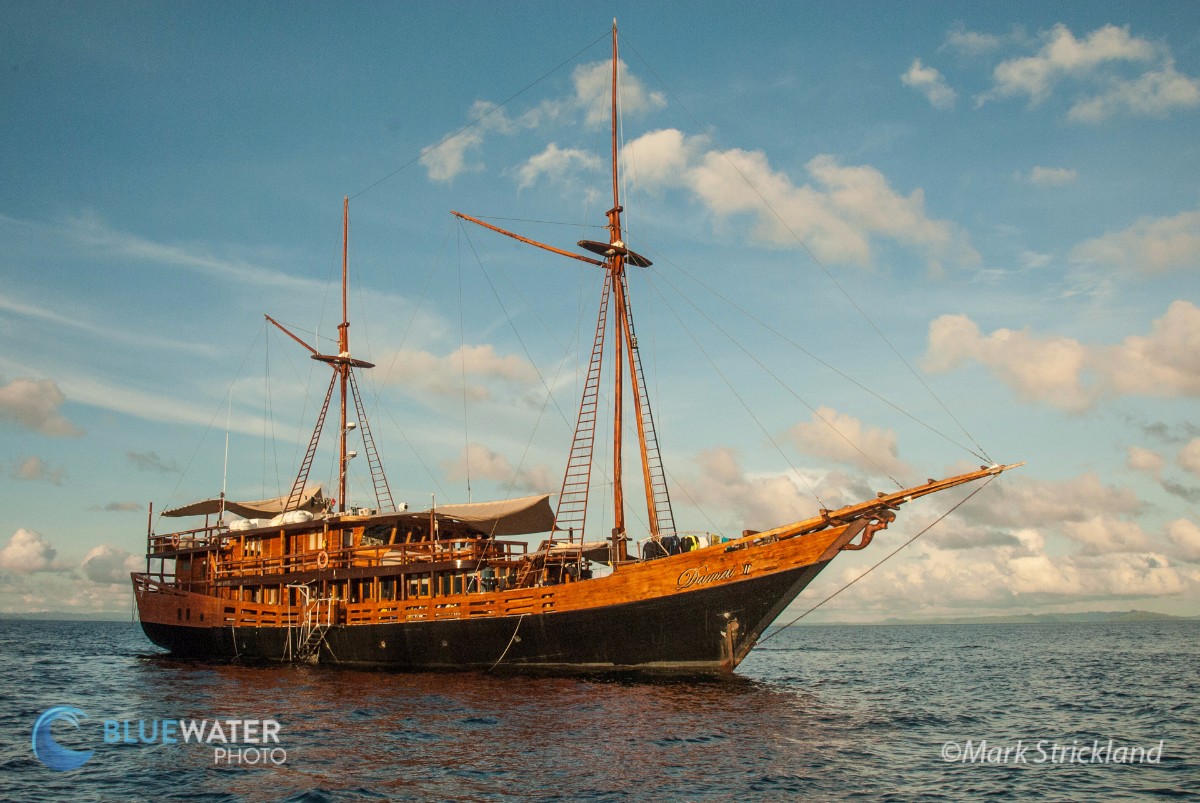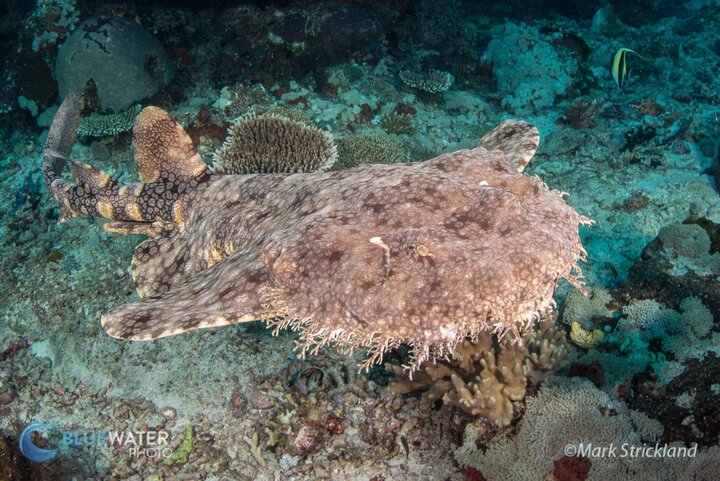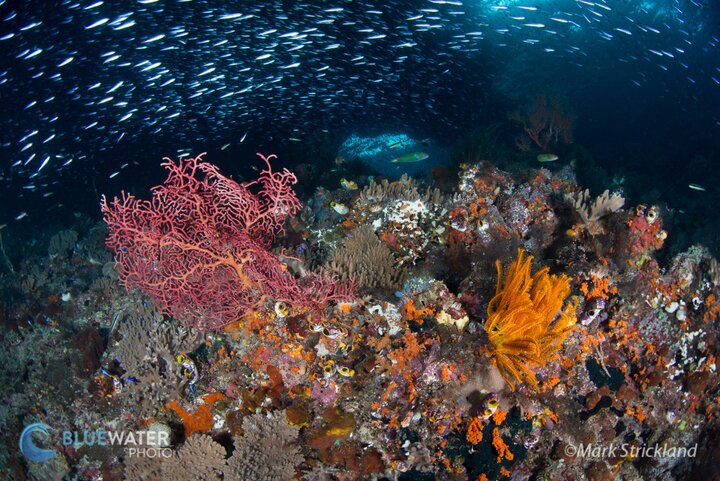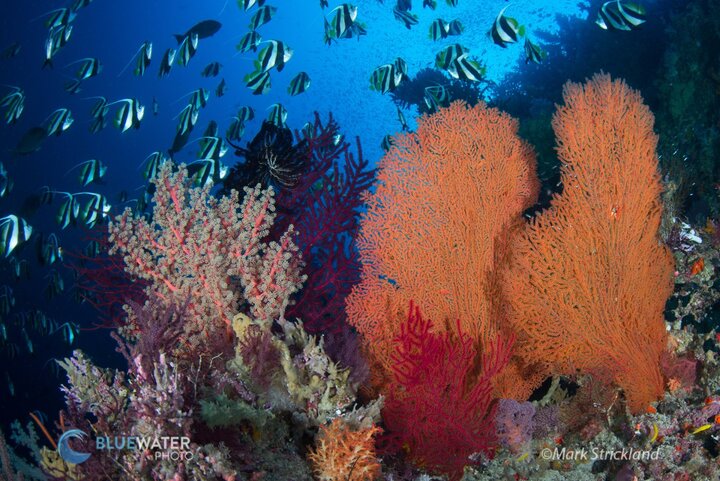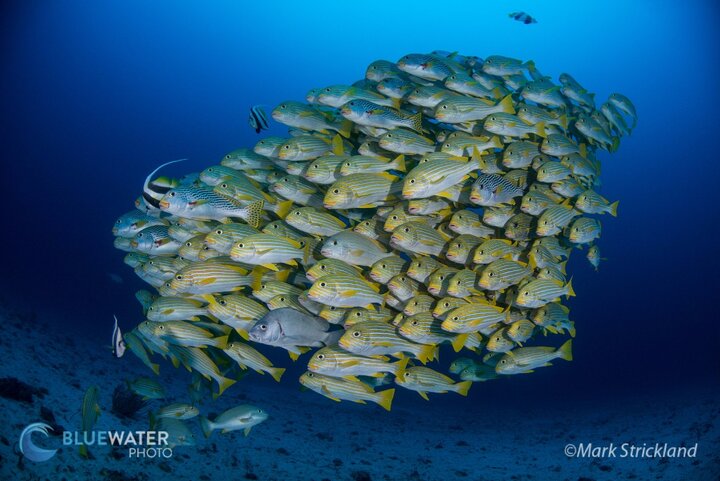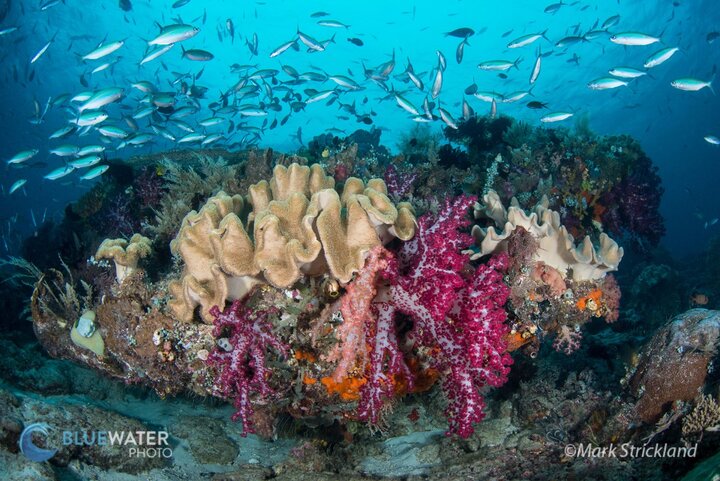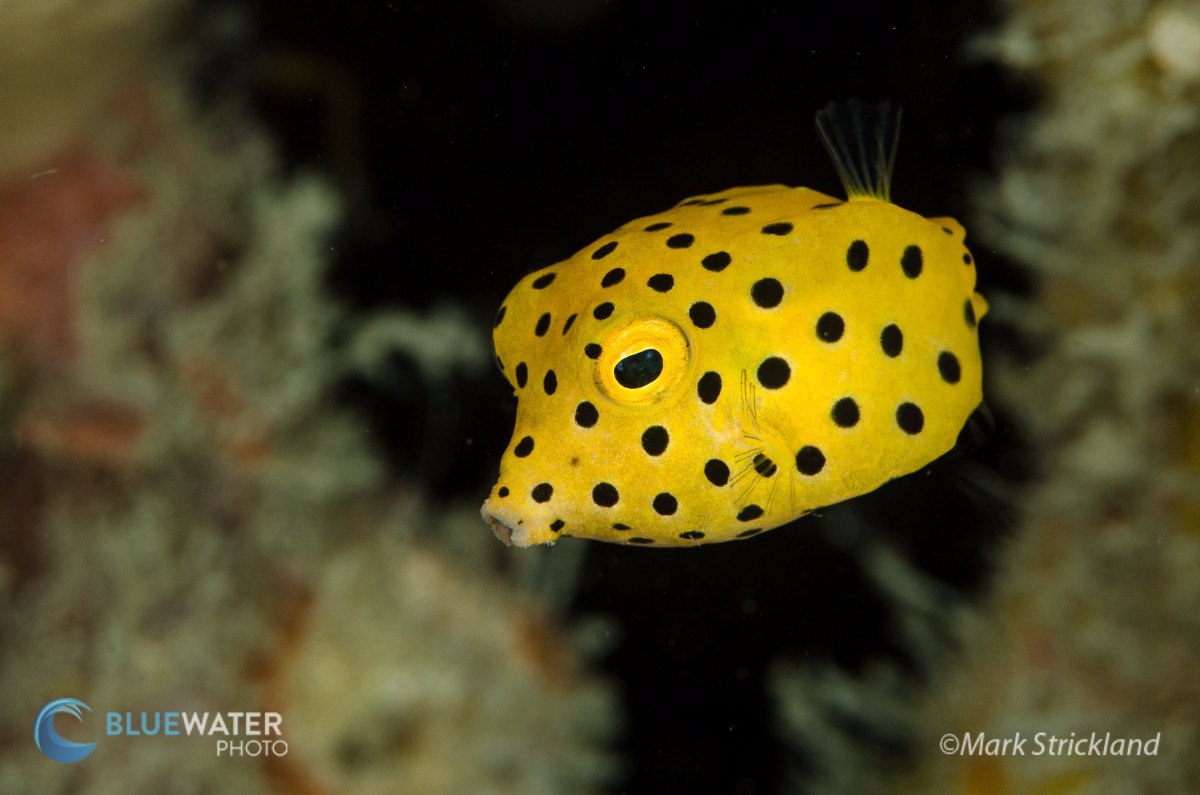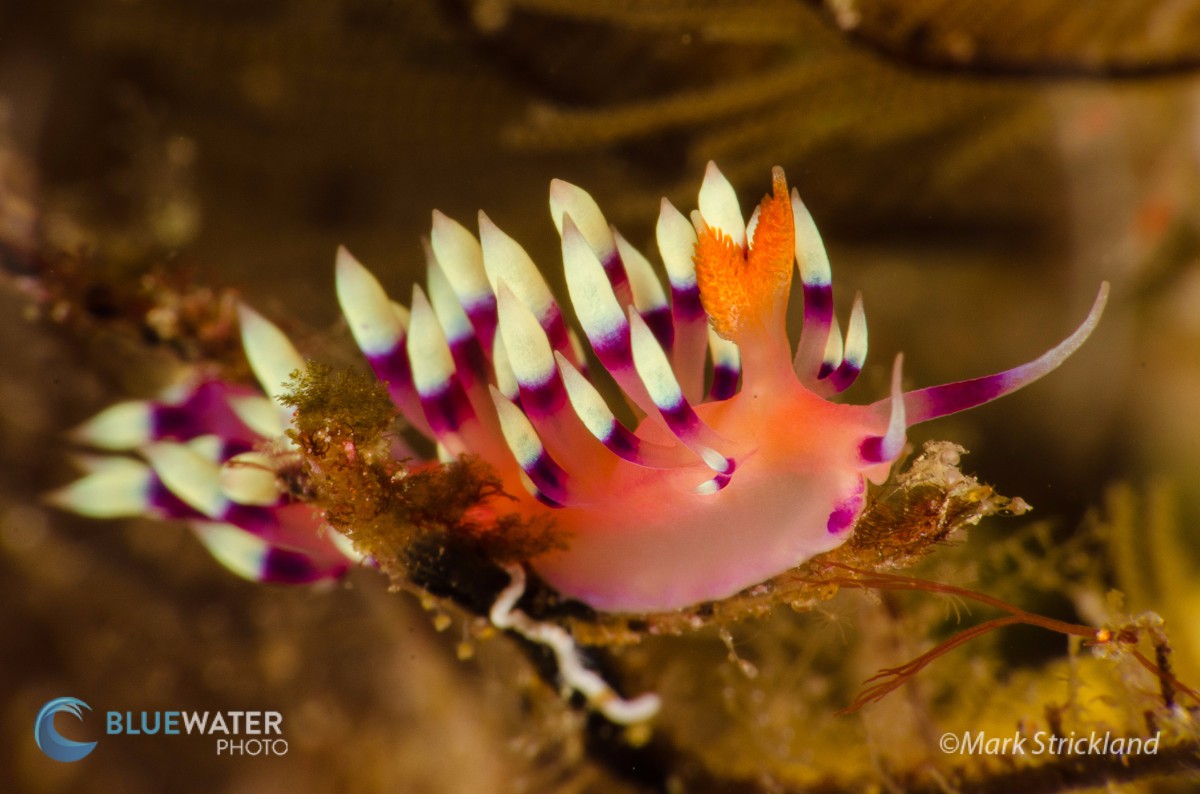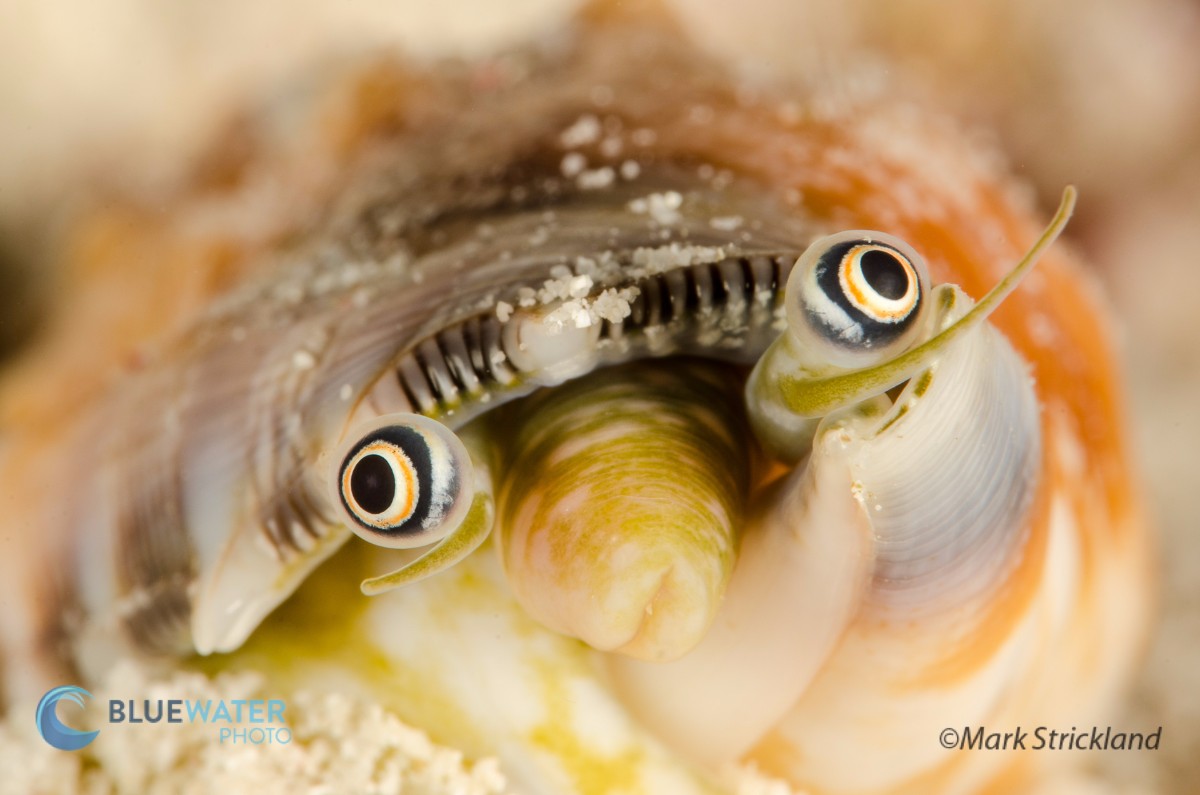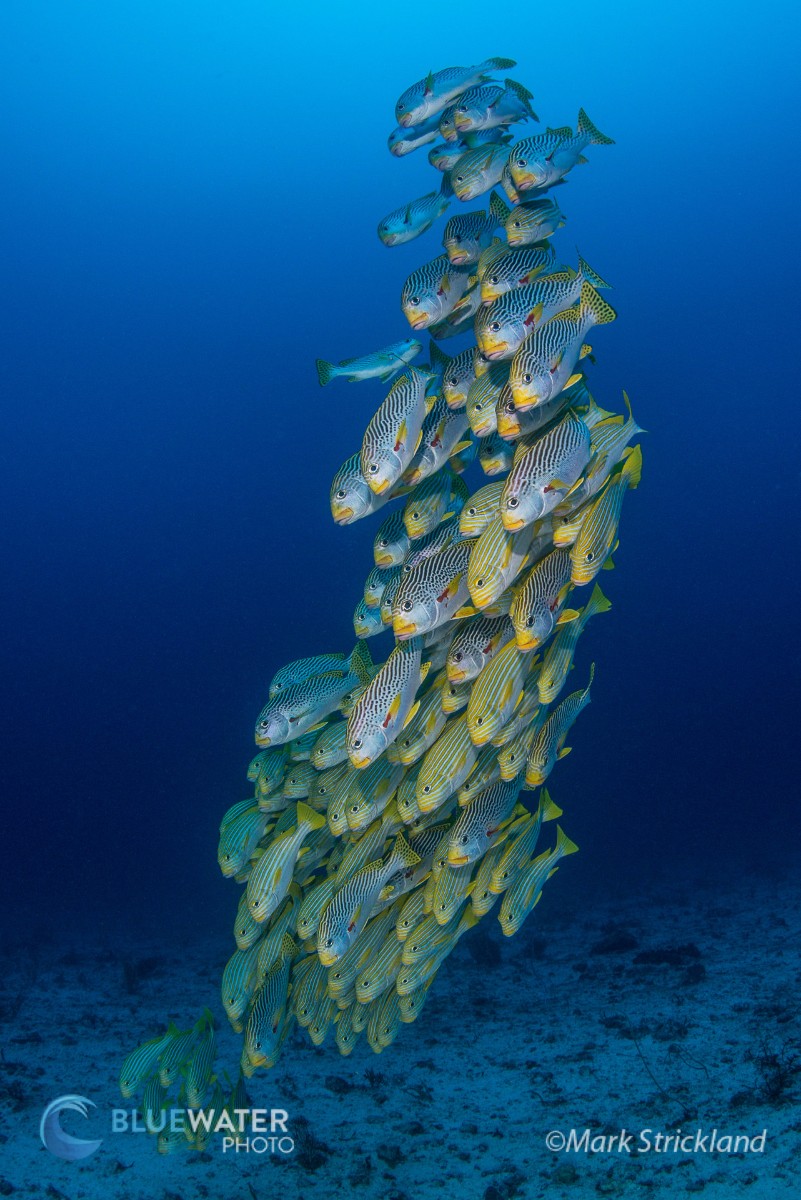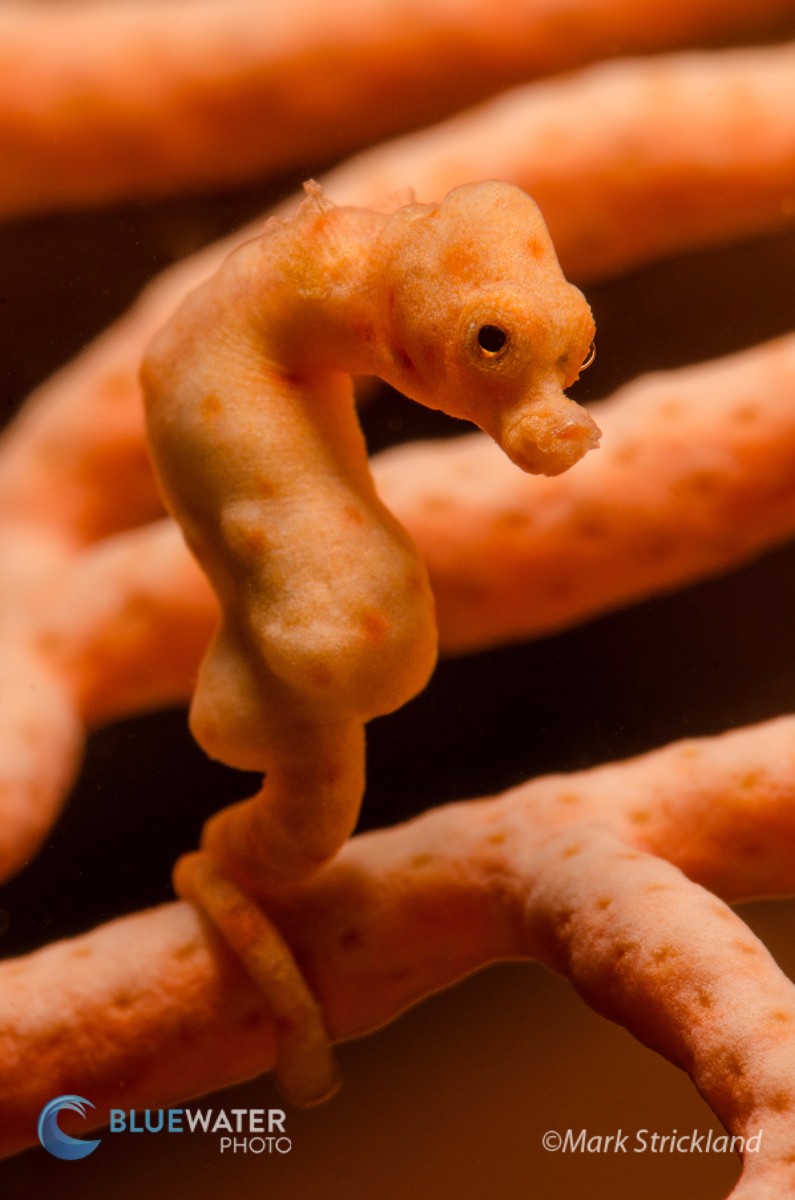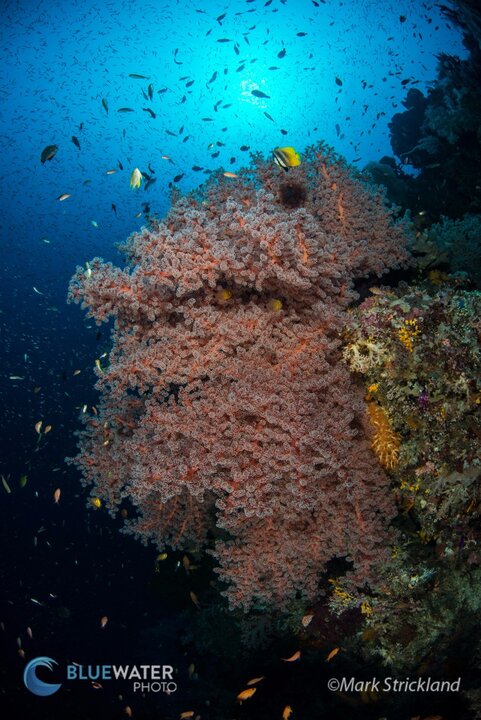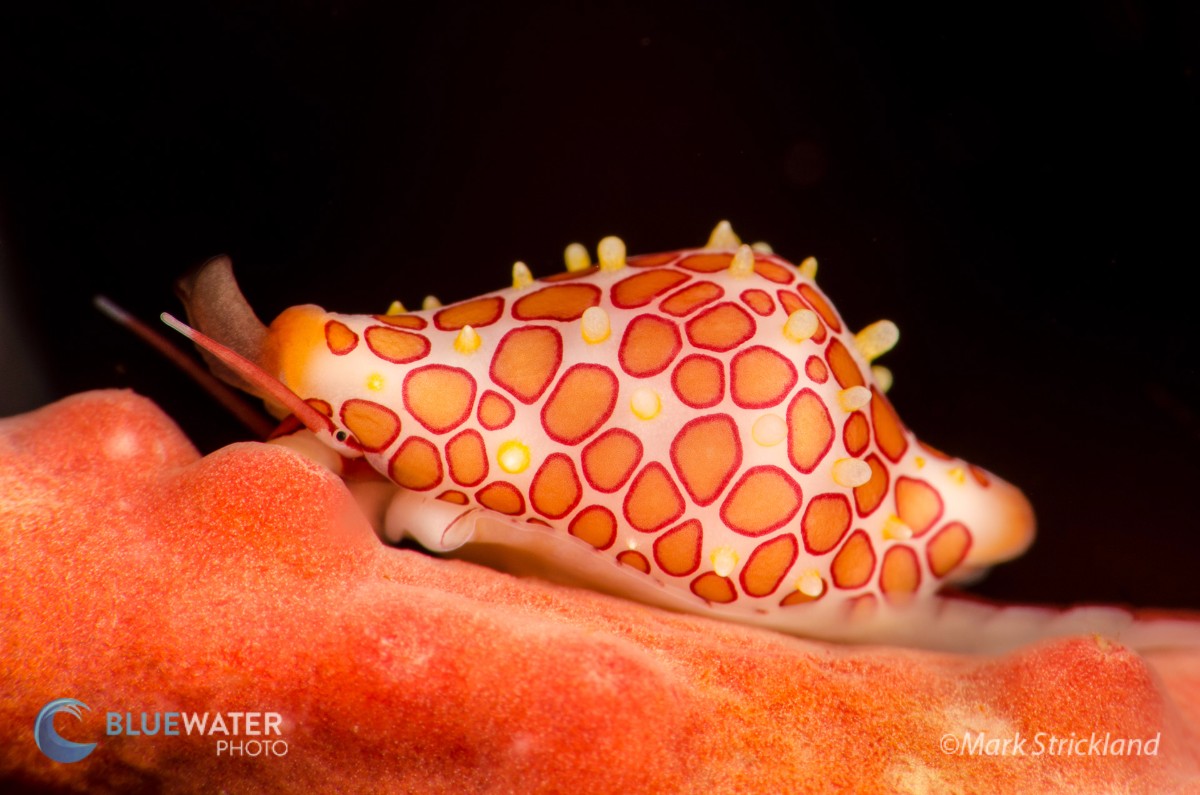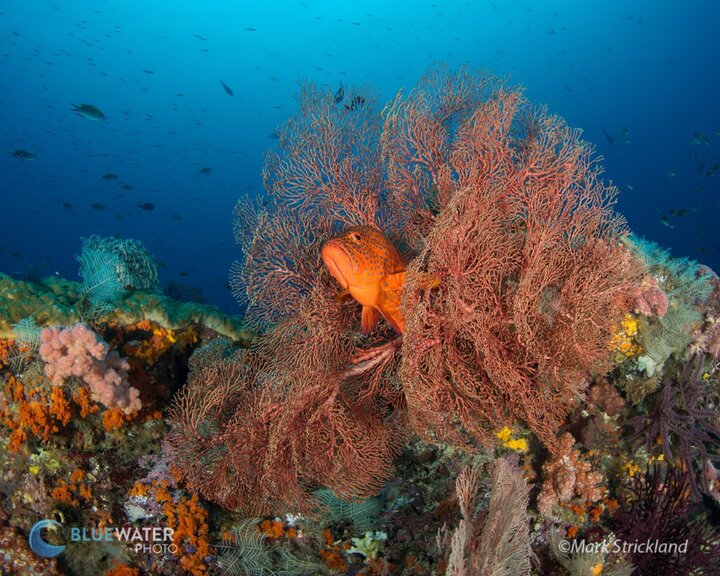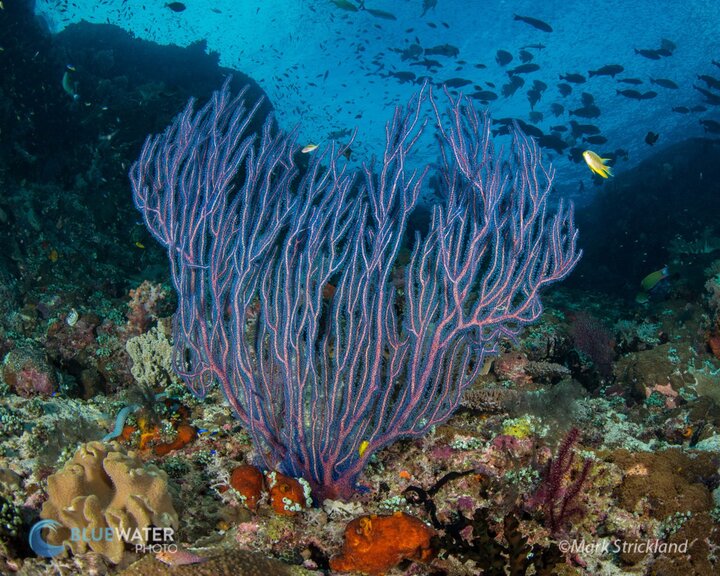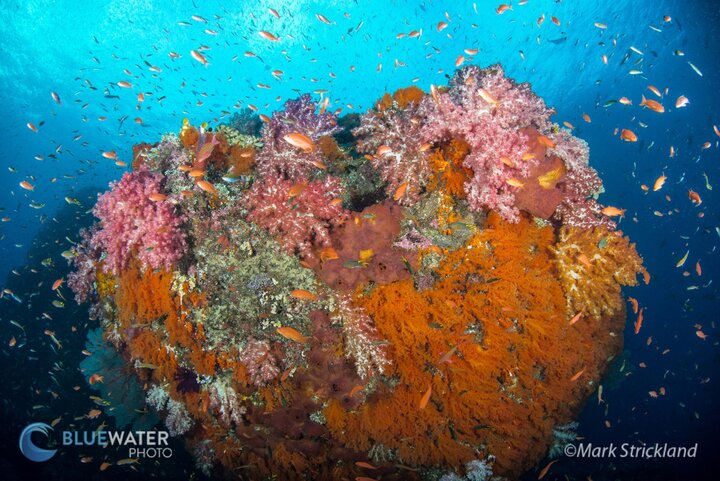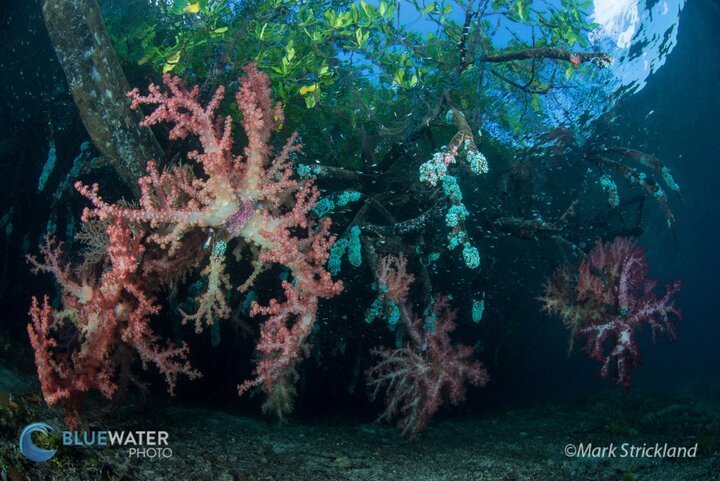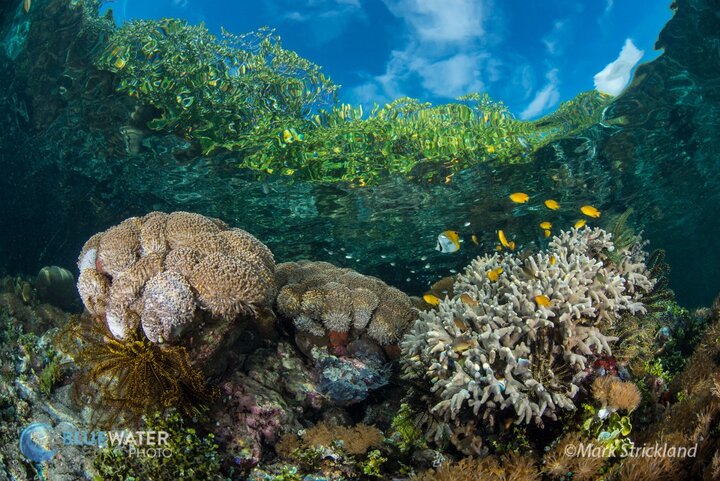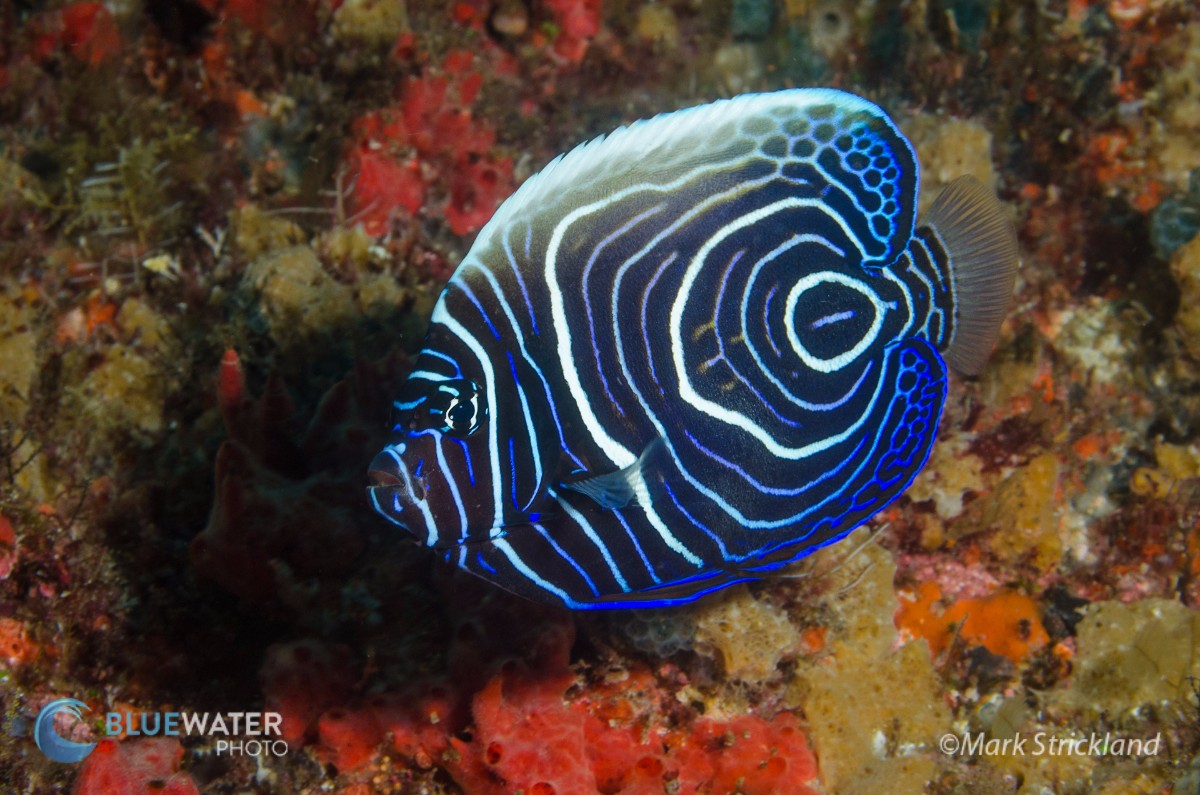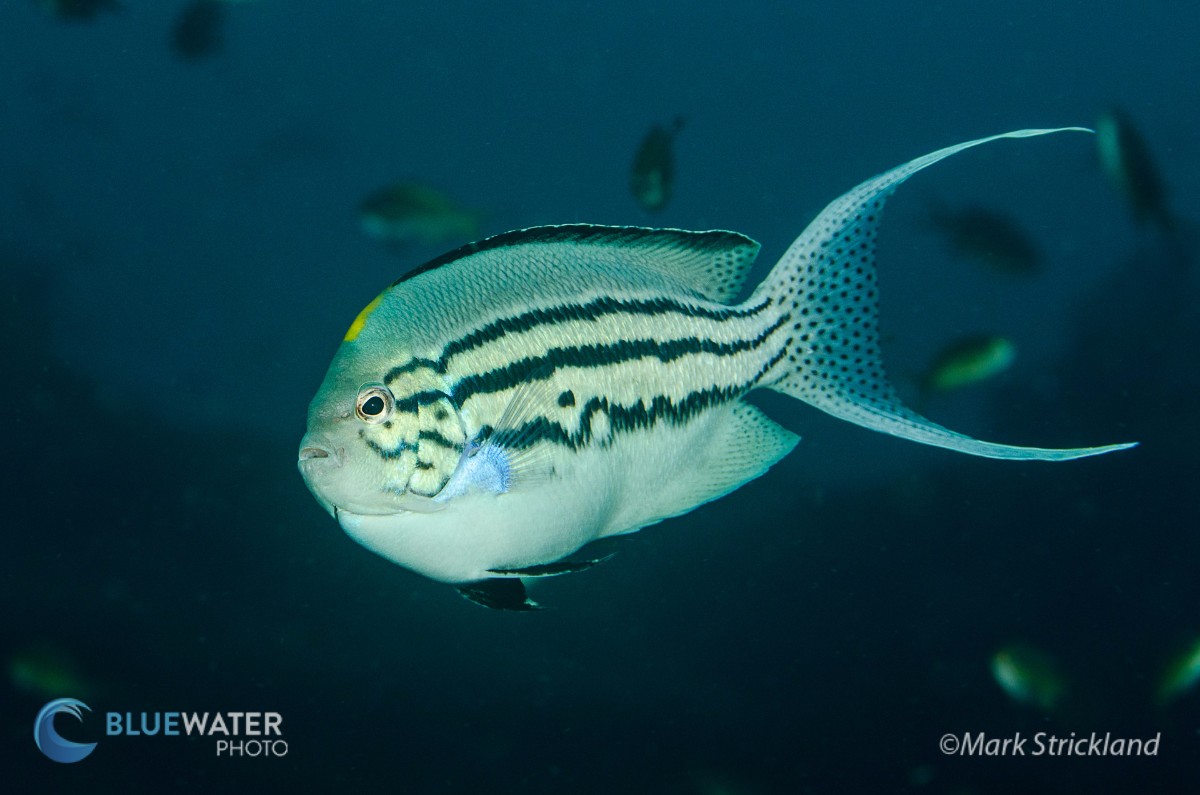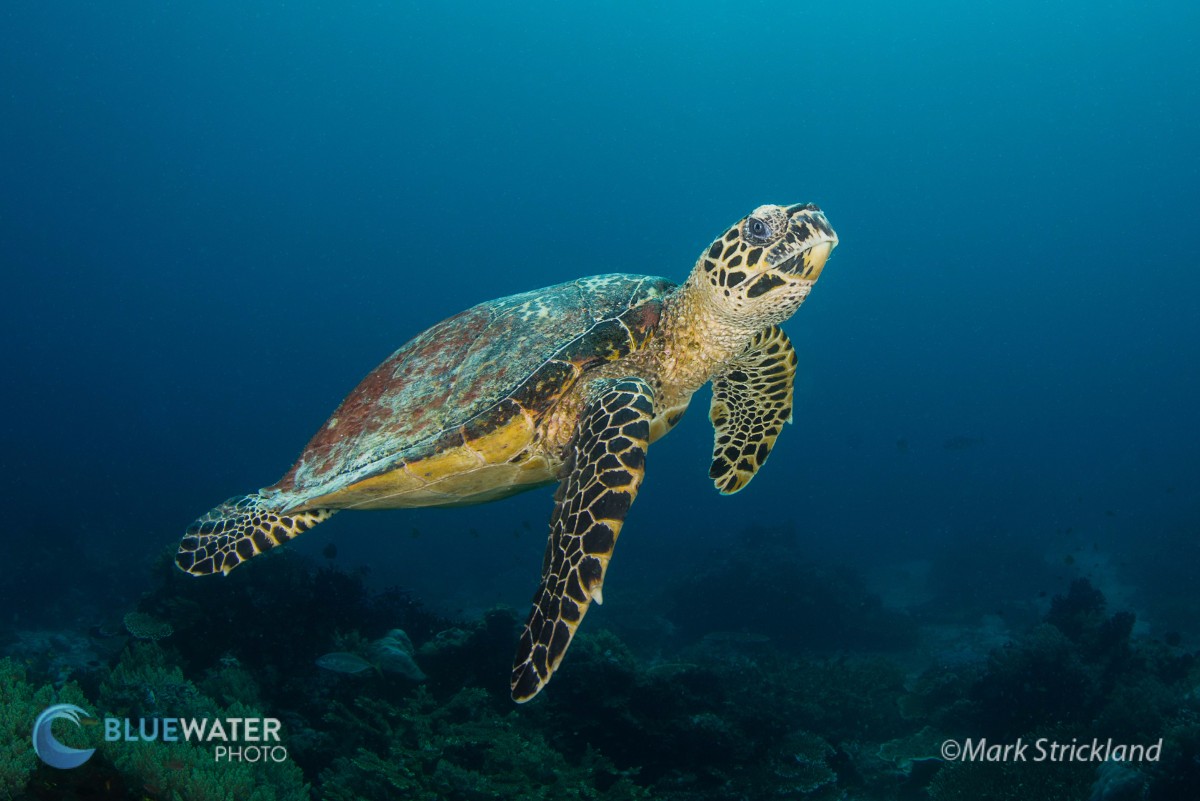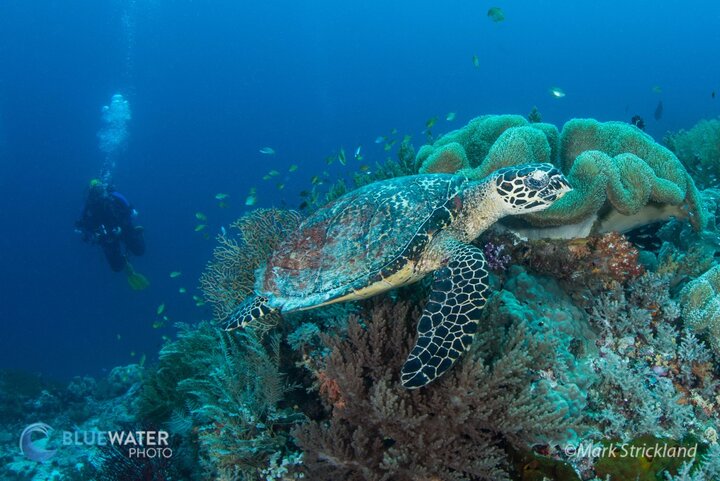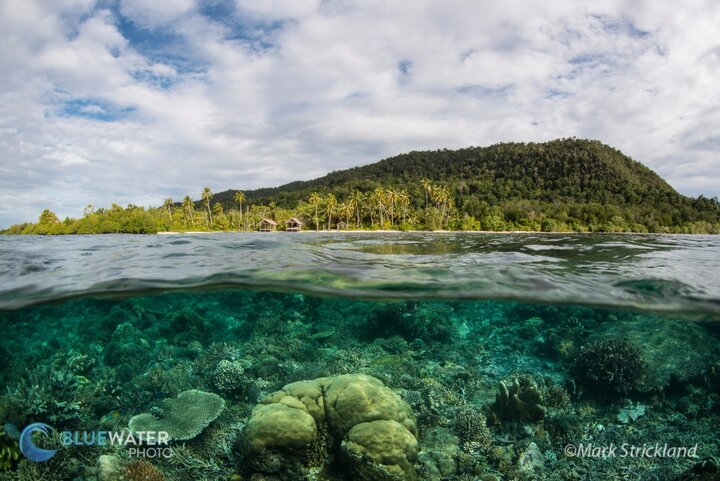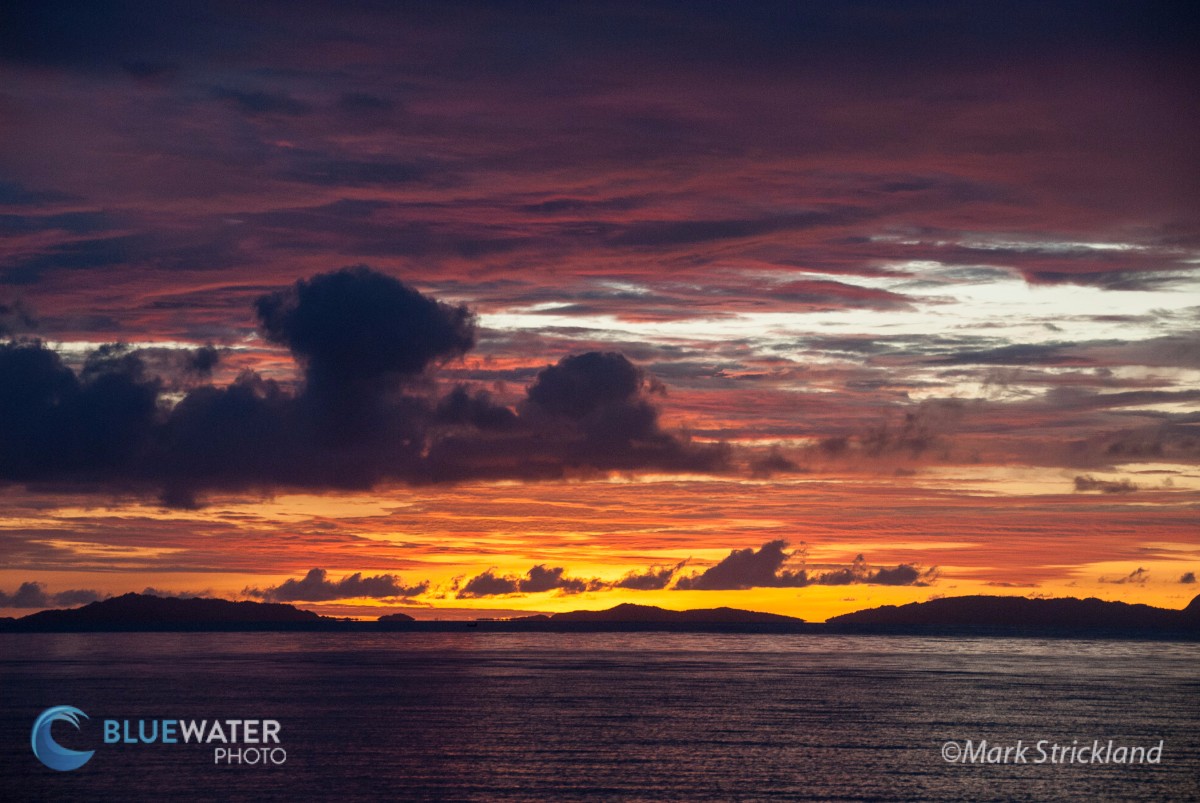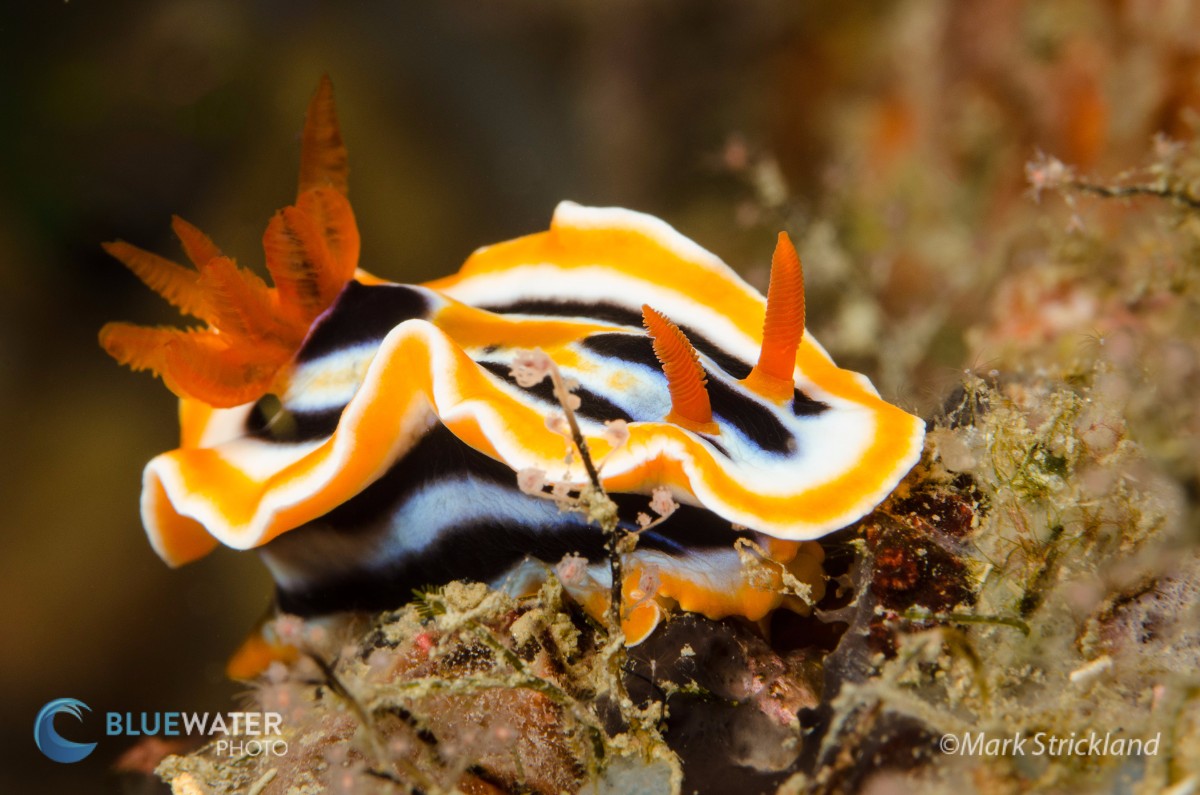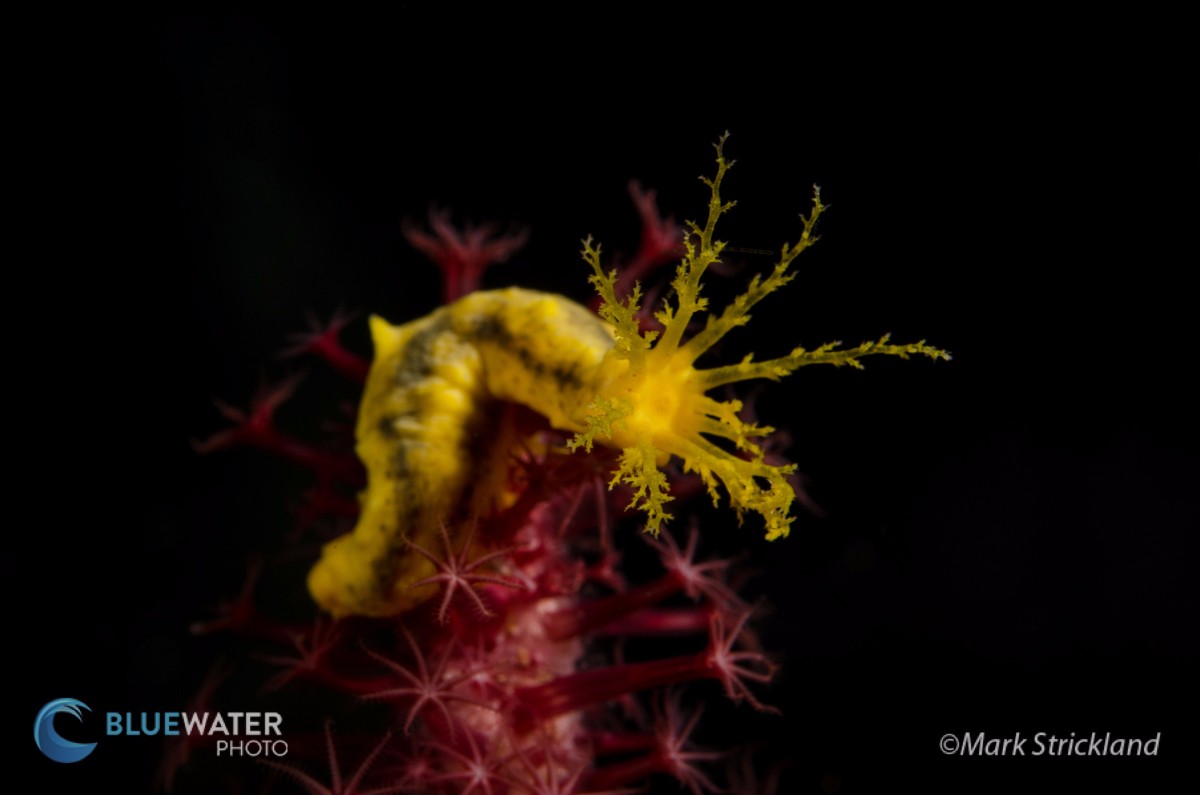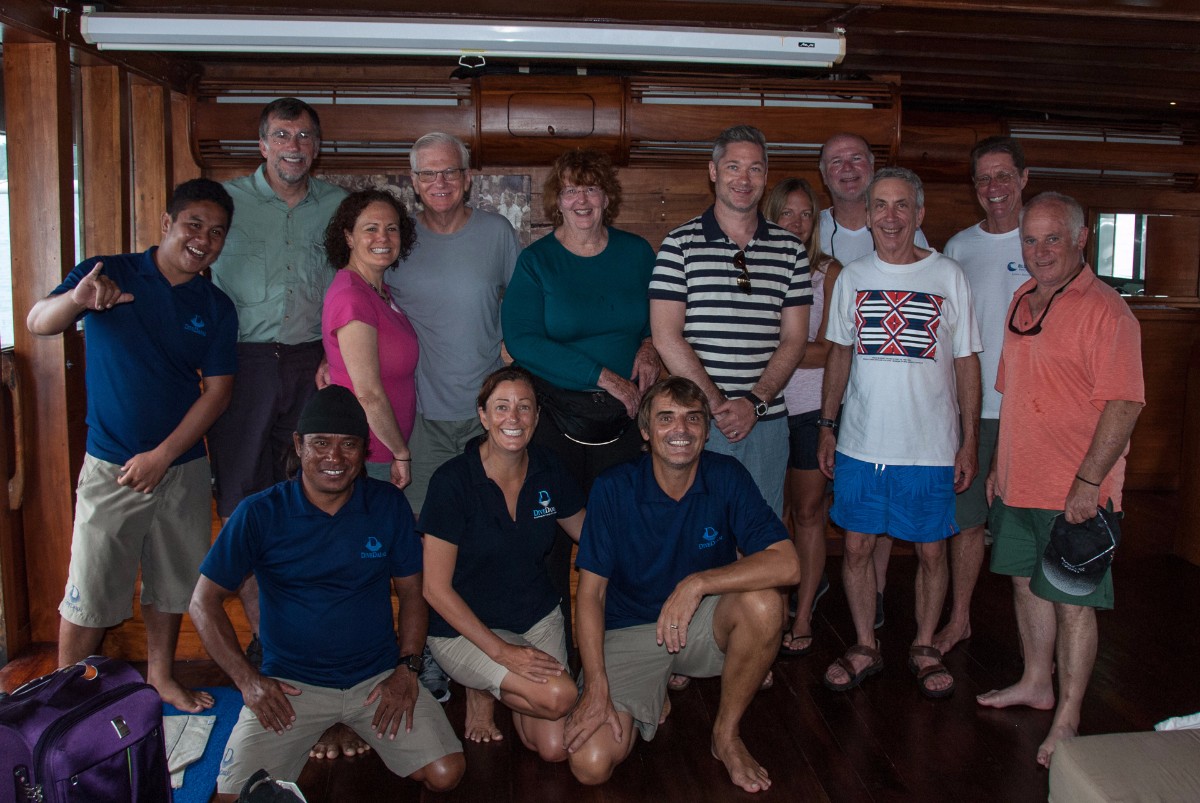Raja Ampat on Damai II
Words & Pictures by Mark Strickland
Consisting of roughly 600 islands located in eastern Indonesia, Raja Ampat is a natural treasure that boasts world’s greatest marine biodiversity, along with stunning and unique scenery above and below the surface. Getting to this remote archipelago does require many hours and multiple flights, but the moment we stepped aboard the elegant and luxurious live-aboard Damai II, all signs of travel stress immediately disappeared. Boasting expansive cabins, spacious dive deck, salon, dining area and multiple sun/shade decks, to say that life onboard was comfortable is a huge understatement. The crew was unfailingly helpful, friendly and enthusiastic, and made every possible effort to make everyone’s trip a special experience. Delicious meals were cooked to order, and complimentary messages offered on a daily basis.
Of course it was easy to get used to such pampered treatment, but the real reason we came was for the diving, and Raja Ampat more than lived up to its exalted reputation. With six highly experienced dive guides who know these reefs like their own backyard, we were never lacking for compelling photo subjects and captivating scenery. Even the checkout dive yielded an impressive array of critters, including orangutan crabs, bubble coral shrimp, and a well-camouflaged wobbegong shark nestled in a cabbage coral.
Our itinerary called for spending the first few days around Dampier Strait, in the northern end of the archipelago. We began with the sloping reef at Cape Kri, where renowned ichthyologist Dr. Gerry Allen counted over 374 different fish species on a single dive—roughly one new species every 5 seconds! Not only is Kri’s fish population extremely diverse, but also super-friendly, typically allowing closer approaches than in other locales. A small sampling included yellow-mask, regal and emperor angelfish, Napoleon wrasse, spadefish, and dense schools of ribbon sweetlips at the reef’s base.
From there we headed to Blue Magic, where we found several more wobbegongs, as well as various snappers and groupers, all complemented by a steady stream of fusiliers, surgeonfish and bigeye jacks passing overhead. A similarly fishy site was Mioskon, where we were surrounded by bigeye jacks, red-tooth triggerfish and various surgeonfish, while our sharp-eyed guides pointed out several Bargiabanti pygmy sea horses, as well as their even smaller Pontohi cousins. The critter action continued after dark at Friwinbonda, with sightings of octopus, dwarf squid, and a host of various crabs and shrimp.
The next morning dawned with glassy seas and brilliant sunshine as we approached our first site, a tiny mushroom-shaped islet named Mike’s Point. Below 50 feet, a mini-wall supported a garden of large black coral trees, home to numerous long-nosed hawkfish and ribbon sweetlips. Most of our time, however, was spent on the thriving reef slope, where we encountered another wobbegong, along with a wide range of colorful reef fish and a pair of mating Jorunna funebris nudibranchs. Perhaps most captivating, however, was the undercut wall of the islet, where a rainbow of vibrantly hued fans, soft corals and tunicates covered nearly every inch of substrate.
Next stop was a return to Cape Kri, where we again found a huge variety of fish life, including pickhandle barracudas, Spanish mackerel and emperor snappers, as well as several schools of ribbon and diagonal-banded sweetlips. Here, too, the shallows held their own attractions, as a very relaxed hawksbill turtle accompanied several dives on their safety stop. Schooling fish and colorful corals surrounded us once again at West Mansuar, as did an assortment of interesting critters and sleeping fish for the night dive at Yangeffo.
Easy conditions continued the next day at Mayhem, where a school of 12 or more bumphead parrotfish allowed several photographers within photo range, a manta made a brief appearance, and an energetic wobbegong swam a meandering path across the reeftop. At Citrus Ridge, slack current made for easy diving, but unfortunately also caused the abundant soft corals to shrink to a fraction of their usual impressive size. Most of our group barely noticed, however, as they were too busy photographing the many groupers, sweetlips and triggerfish, along with another wobbegong and a super-friendly hawksbill turtle that stayed with us the entire dive.
The afternoon dive consisted of a fishy ridge called Barracuda, appropriately named for the school that appeared in mid-water on the up-current end. From there we headed to Penemu for a bracing climb up several hundred steps to a spectacular lookout point, where a recently constructed viewing platform made for a great scenic vista of our spectacular surroundings. Nearby, the night dive consisted of a coral-covered wall, where we discovered a nice assortment of decorator crabs, flatworms, and a snail with crazy-looking eyes on stalks.
The next day featured a lively seamount known as My Reef, followed by 2 dives at an iconic site called Melissa’s Garden, where three small islets protrude above the surface, surrounded by a stunningly healthy forest of hard corals. Fish life was abundant here, with sightings of clown triggerfish, black-stripe and blue-girdle angelfish, mushroom coral pipefish and wobbegongs, among countless other species. In addition to spectacular hard corals, some of the nicest scenery was at safety-stop depth at the base of the little islets, where orange cup corals, red soft corals and a rainbow of tiny tunicates were all feeding in the current.
After an overnight passage heading south, we enjoyed a rare treat by spending most of the day exploring a seldom-visited area west of Misool, the famed “blue water mangroves” of Nampele. A rising tide, blue skies and calm seas made perfect conditions for wide-angle photography in the shallows, showcasing the unique combination of mangrove forest, clear water and healthy coral reef. The resulting images were nothing short of extraordinary, with beams of sunlight streaming through green foliage, illuminating vibrant red soft corals clinging to mangrove roots, often accompanied by archerfish and their own reflections on the glassy surface. While the wide-angle scenery is the main attraction here, macro shooters were also thrilled when our guides discovered a blue-ring octopus, as well as leaf scorpionfish and various other critters. An additional element of excitement was the knowledge that saltwater crocodiles do inhabit this area, but our ver-vigilant dinghy drivers stayed on constant patrol, allowing us to concentrate on shooting rather than constantly looking over our shoulders.
Heading further south, our final few days were spent around Wakararket and Fiabacet, widely considered the heart of Misool’s best diving. 2 Tree Island and 3 Sisters both proved to be colorful and lively wall dives, featuring everything from pygmy seahorses to peacock mantis shrimp to waves of schooling spadefish, fusiliers and barracudas. Yelliet Kecil, site of both afternoon dives, offered a sloping reef where we encountered a whole host of photogenic species, including a strikingly patterned juvenile emperor angelfish as well as a trio of very approachable barramundi cod.
For two consecutive days we started off at the celebrated site known as Magic Mountain, a submerged ridge that rises from deep water to within 20 feet of the surface. On both days we enjoyed gentle currents and nice visibility here, allowing full exploration of this exceptionally fishy site. Immediately upon descent, we were greeted by clouds of fusiliers, accompanied by gaggles of spadefish near the top of the ridge.
In the mid-depths, white pyramid butterflyfish & unicornfish filled the water column, in turn replaced by masses of schooling bannerfish around 100 ft. A young giant grouper immediately showed up upon our arrival at the up-current end of the ridge, and was soon joined by a half dozen gray reef sharks. Off in the distance, several large Napoleon wrasse placidly finned their way along. Spanish mackerel patrolled the reef’s edge, along with several species of jacks, including a pair of brilliant golden ones as well as several neon-hued bluefin trevallies. The main claim to fame here, however, is mantas—it’s the only place in the world where both reef and oceanic mantas are known to frequent the same location. While they didn’t show up in big numbers, we did have at least one oceanic manta each day, resulting in some nice photos and videos for several lucky shooters.
For subsequent dives, we explored among the many limestone islets in the area, including another famous site known as Boo Windows. Here, one islet features are a pair of swim-through “windows” just below the waterline, creating an impression of two blue “eyes” in the rock. Throughout the site, vibrant fans and soft corals are complemented by colorful tunicates and sponges. The countless varieties of reef fish seem exceptionally tame here, with normally shy species like clown triggerfish and coral trout allowing close approaches.
Another limestone islet in the area is appropriately named Nudibranch Rock, which when viewed above water, bears an uncanny resemblance to its namesake—complete with a pair of “rhinophores” (bushes) at the head end and a distinctive set of “gills” (more bushes) on the other. Underwater, we were whisked along by a steady current that made it challenging to stay put, but also attracted lots of fish, while prompting the soft corals to inflate to their full glory. Looking closer, our guides found plenty of great small critters for us to photograph, including pygmy sea horses, nudibranchs, and several types of tiny allied cowries.
Our itinerary had called for our last day to be at a muck site at Batanta Island, but engine problems dictated that we stay in Fiabacet. There was no danger of boredom, however, as Boo East and Yelliet Kecil were lively as ever, with a parade of fish and invertebrate life that compared well with any of the other sites in the region.
All in all it was an excellent trip in a truly exceptional region, one that I hope we can repeat again soon. Actually, I’d be thrilled to turn around and go back tomorrow… where do we sign up?!

